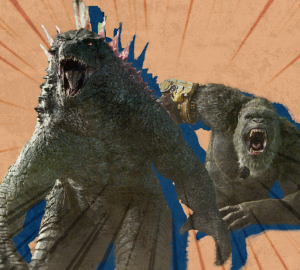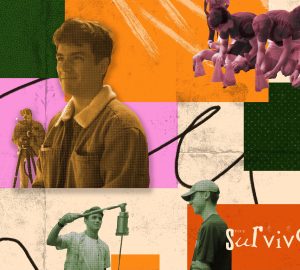A bite-sized history of our beloved “zombie apocalypse”
The zombie apocalypse is a plot in fictional TV shows, movies, video games, novels, and comics that surrounds the idea that an army of undead, flesh-eating monsters will ransack humanity and lead to the end of normal society.
This plot flows in tandem with two genres: horror and science-fiction. Horror media aims to strike fear or dread into the hearts of its readers, while sci-fi explores the ethics of emerging technology. Data indicates that zombie popularity skyrocketed in the 2010s, but it’s as undead as ever in 2023.
HBO’s “The Last of Us” premiered with 4.7 million views on its opening night, similar to AMC’s “The Walking Dead,” which opened with 5.24 million views in 2010.
But where did this cult subgenre come from? Why is it so popular? Though the zombie has plagued our minds in recent decades, its origins date back centuries ago in Haiti, and the tragic history is more horrific than fiction.
Zombification is a crime under the Haitian Penal Code (Article 246), in which it is considered to be on par with murder. pic.twitter.com/DaMZX9DsWo
— ML House of Voodoo (@MLHouseofVoodoo) November 9, 2016
During the 1700s, enslavers on the island performed “human zombification” to capture laborers for their plantations. They would employ Bokors, a type of voodoo spiritual practitioner, to poison victims via common surfaces or ingestion.
After the victim presumably died from the poison, he would be buried in traditional fashion by his loved ones. However, once the mourning party left the gravesite, the Bokor would dig up the person and brutally beat him to reinforce the trauma of being buried alive. Therefore, the victim was aware of his “death” the entire time.
After being dragged back to the plantation, he would be fed a hallucinogenic mixture sourced from pufferfish, plants or a rare tropical toad. This mixture made people more susceptible to the enslavers’ control and kept them working on the plantations deep in the woods and away from society. Rarely, these victims would escape the plantation to return home — a dead man walking on the horizon.
The zombie was a personification of colonial anxieties and nonautonomy at the physical, psychological and spiritual levels. Word of this phenomenon reached the Western world in the 19th century, but it wasn’t common knowledge until the early 20th century due to a film titled “The White Zombie.” Later productions ditched the Haitian spiritual origins but kept the monster itself.
White Zombie (1932) was the first feature-length zombie film ever made. A young man approaches a witch doctor, played by Bela Lugosi, for a spell to lure the woman he loves away from her fiance. The woman ends up becoming a zombie slave. #WyrdWednesday pic.twitter.com/8qkUFH2pVM
— Sarah Nour(@SaCha1689) October 12, 2022
Now, we can’t discuss these films without George A. Romero’s “Night of the Living Dead,” which many call the father of the subgenre. “Night of the Living Dead” amplifies body horror and introduces us to the most critical ingredient of good zombie media: the survivors.
Trapped in a Pennsylvania farmhouse, a group of seven tries to survive an army of cannibalistic corpses. Aside from sparking the zombie craze, “Night of the Living Dead” pushed for Black representation in cinema. Duane Jones’ character, Ben, was a meaningful protagonist in a time when heroes were always White men. During a time where Black characters were rarely shown in film, Romero defended his performance, stating, “Jones was the best actor we met to play Ben.”
Duane Jones as Ben in NIGHT OF THE LIVING DEAD (1968)
— Retro Horror (@el_zombo) January 14, 2019
“Now, get the hell down in the cellar. You can be boss down there. I’’m boss up here.”#zombie #retrohorror pic.twitter.com/wYxXxXwyNU
After the success of “Night of the Living Dead,” among other films, horror and science-fiction sank their teeth into pop culture during the 70s and 80s, making it the perfect time to crank out more zombie flicks, such as “Children Shouldn’t Play with Dead Things,” “The Evil Dead,” “The Return of the Living Dead” and “Dawn of the Dead.”
80s zombie movies are such a comfort. pic.twitter.com/J1ROvu0qFs
— ℌ𝔢𝔞𝔡𝔰𝔥𝔬𝔱(@suckafreeluv) January 23, 2023
There’s no denying the campiness of some of these films, but the late 90s and 2000s came to shift the game with Capcom’s “Resident Evil” franchise and the release of “28 Days Later.” Zombie media was evolving with a focus on the “turning” itself. In “Resident Evil,” the villainous Umbrella Corporation creates militarized bio-weapons. “28 Days Later” begins with a rage virus transmitting from chimps to humans. In 2008, we got “Quarantine,” which suggests that a strain of rabies can cause zombification.
Video games put us in the hot seat of the infection with “Left 4 Dead,” “Minecraft” and “Call of Duty: World at War — Zombies,“ where you can bash skulls and dodge biters. A virus doesn’t seem so scary if you can burn it with a flamethrower or get a clean headshot. Not everyone wants the harrowing zombie narrative.
"Wow i am fighting 50 zombies at once"
— Deus Guikof
Left 4 Dead 2 in 2009: https://t.co/RCX1nB1EcJ pic.twitter.com/diECx9ogKH(@DeusGuikof) January 25, 2023
In fact, the plot has been parodied multiple times. The Comedy Central show, “South Park” satirizes multiple zombie flicks with the “Pinkeye” and “Night of the Living Homeless” episodes. In the “Maureen Ponderosa Wedding Massacre” episode of “It’s Always Sunny in Philadelphia,” a wedding party of zombie-like guests shamble around and cause trouble for The Gang. There are even zom-com movies such as “Shaun of the Dead.”
As we saw earlier, the 2010s took zombie media to its greatest heights yet. So much so that the United States government dropped a hypothetical zombie strategy plan. No, really.
Science also started becoming cool, mainstream knowledge with the internet. Zombies became more rooted in reality, too. The “Dying Light” games keep their attention on the infection while imagining politics and how society would build or rebuild itself around the “biters.”
“The Walking Dead” takes us from the beginning of the outbreak to the “end — ” walkers decaying the whole way. “The Walking Dead” is a masterclass in television starring Andrew Lincoln as Rick Grimes, a small-town cop trying to save the people he loves from a world ravaged by “walkers.” The series explores almost any apocalyptic situation you could think of, and by the end of Grimes’ story, walkers seem like the least of humanity’s problems. “The Walking Dead” show and comic aren’t afraid to kill their darlings (literally), and perhaps that’s why it found success for eleven TV seasons, a video game series, a podcast and a spin-off show. Nobody is safe.
When the zombie apocalypse starts but it’s the last of us zombies instead of the walking dead pic.twitter.com/KG2KYNVciO
— R ✪ (@Raybirdxx) January 19, 2023
Rick Grimes soon becomes something of an archetype in zombie media. One of the most compelling story dynamics in the genre is a hardened father navigating parenthood during the worst possible scenario, oftentimes a father-daughter duo. “World War Z” and “Train to Busan” speed up their zombies and focus on the pure chaos with scenes of fathers running their kids to safety. The telltale “Walking Dead” games and “The Last of Us” utilize the idea of chosen family by pairing a solemn man and an orphaned girl as the protagonists.
“The Last of Us” also has some of the most fascinating zombie designs yet. The new television program has been eager to jump on the possibilities of horror in a society that has experienced the COVID-19 pandemic. The zombies in this world are based on a real natural occurrence — Cordyceps fungus that can possess the bodies of small insects. Though this fungus currently can’t possess humans, “The Last of Us” imagines a world where this fungal infestation transforms our bodies into terrifying biomes. The success of this series appears to be secured with a confirmed second season. Could this critical acclaim predict an uptick in zombie media?
Episode 2 of the last of us show was AMAZING, the story, characters and the clickers were ON POINT pic.twitter.com/4kVxvgkBFC
— SiinWop (@siinwop) January 23, 2023
If “The Last of Us” adaptation doesn’t seal the deal, perhaps the new “Dead Space” remake will. What makes this story so captivating is its emphasis on outerspace horror. Similar to Ridley Scott’s Xenomorph or John Campbell’s “The Thing,” the alien zombies of “Dead Space” seek hosts to inhabit. These creature capabilities don’t need to rely on Earthside science, so we can be just as mystified as the protagonist Isaac Clarke as he tries to find his wife, battling infected crewmates with bone-blade arms and slimy tendrils along the way.
Most exciting bit of the Dead Space remake for me is that kinesis has been upgraded to the Dead Space 2 model. I'm not using ammo unless I absolutely have to. pic.twitter.com/UNNppoNxoU
— Jacob Geller (@yacobg42) January 29, 2023
In 2023, in an era where fictional threats seem all the more real — zombie media hits close to home. There’s comfort and catharsis in stories about people defending their loved ones through the end of the world. The apocalypse serves as humanity’s “great equalizer.” It erases the repetitiveness and structure of modern society and brings us to a primitive place where our only focus is survival. This hardship brings people of all walks of life together, making these stories full of deep, diverse characters. Horror and sci-fi validate our ultimate fear of non autonomy through illness, disaster, injury and “survival of the fittest” ideas. We fear the monster, and zombies turn us into the monster itself. You can only imagine the unique moral dilemmas that poses. Perhaps it’s better for us to consider them before it’s too late.





























